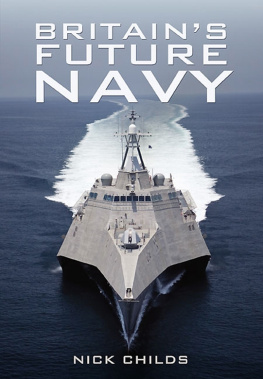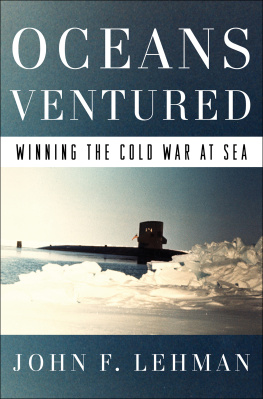The Future of the Soviet Navy
Westview Special Studies
The concept of Westview Special Studies is a response to the continuing crisis in academic and informational publishing. Library budgets are being diverted from the purchase of books and used for data banks, computers, micromedia, and other methods of information retrieval. Interlibrary loan structures further reduce the edition sizes required to satisfy the needs of the scholarly community. Economic pressures on university presses and the few private scholarly publishing companies have greatly limited the capacity of the industry to properly serve the academic and research communities. As a result, many manuscripts dealing with important subjects, often representing the highest level of scholarship, are no longer economically viable publishing projects--or, if accepted for publication, are typically subject to lead times ranging from one to three years.
Westview Special Studies are our practical solution to the problem. As always, the selection criteria include the importance of the subject, the works contribution to scholarship, and its insight, originality of thought, and excellence of exposition. We accept manuscripts in camera-ready form, typed, set, or word processed according to specifications laid out in our comprehensive manual, which contains straightforward instructions and sample pages. The responsibility for editing and proofreading lies with the author or sponsoring institution, but our editorial staff is always available to answer questions and provide guidance.
The result is a book printed on acid-free paper and bound in sturdy, library-quality soft covers. We manufacture these books ourselves using equipment that does not require a lengthy make-ready process and that allows us to publish first editions of 300 to 1000 copies and to reprint even smaller quantities as needed. Thus, we can produce Special Studies quickly and can keep even very specialized books in print as long as there is a demand for them.
About the Book and Editors
The efforts of the Soviet Union since the mid-1950s to develop naval power have produced one of the strongest navies in the world, but this achievement has not been without serious costs. The construction of increasingly complex submarines, ships, and aircraft has required greater investment of resources and manpower. This volume addresses whether the Soviet Union will continue naval expansion and what directions technological development will take in the future. In particular, the contributors consider trends in submarine, aircraft carrier, and surface combatant systems and examine what implications these developments have for U.S. defense planning over the next two decades.
Naval Commander Bruae W. Watson, director of publications at the Defense Intelligence College, is the author of Red Navy at Sea (Westview, 1982) and The Soviet Navy (Westview, 1986). ColonelPeter M. Dunn, foremerly assistant provost for research at the Defense Intelligence College, is commander of the U.S. Air Force ROTC detachment at the University of Missouri. He is the coeditor (with Bruce W. Watson) of The Military Lessons of the FalklandIslands War (Westview, 1984) and of American Intervention in Grenada (Westview, 1985).
First published 1986 by Westview Press
Published 2019 by Routledge
52 Vanderbilt Avenue, New York, NY 10017
2 Park Square, Milton Park, Abingdon, Oxon OX14 4RN
Routledge is an imprint of the Taylor & Francis Group, an informa business
Copyright 1986 Taylor & Francis
All rights reserved. No part of this book may be reprinted or reproduced or utilised in any form or by any electronic, mechanical, or other means, now known or hereafter invented, including photocopying and recording, or in any information storage or retrieval system, without permission in writing from the publishers.
Notice:
Product or corporate names may be trademarks or registered trademarks, and are used only for identification and explanation without intent to infringe.
Library of Congress Catalog Card Number: 85-52192
ISBN 13: 978-0-367-29239-3 (hbk)
To
Bruce, Susan,
Jennifer, and Ella Watson
Contents
by John Jordan
by Norman Friedman
by Norman Polmar
by Arthur D. Baker III
by Frank Uhlig, Jr.
by Jan S. Breemer
by Bruce W. Watson
The appointment of Sergei G. Gorshkov as Commander-in-Chief of the Soviet Navy on the eve of the Twentieth Party Congress in 1956 signalled the Soviet Unions Intention to stress naval development. Such subsequent development has been Impressive and has brought the Soviet Navy from little more than a coastal defense force to the force of today, which is one of the two strongest navies In the world and which operates on all the worlds major oceans.
This effort has certainly not been without its costs. Soviet naval construction is both dynamic and pedestrian, dynamic to the extent that when the Soviets realized that they had produced a system (such as the Moskva -class helicopter carriers) that did not meet mission specifications they discontinued and moved on, and pedestrian because technological innovation between one system and the next is generally much less than that between Western systems. The result has been a continuous stream of submarines, ships, and aircraft.
But will the Soviets continue this emphasis on naval construction, and if so, in what directions will they proceed? The current program is costly in terms of resources and manpower and to think that the Soviets will unconsciously continue such a program is simplistic. Conversely, the Soviets have gained much through naval expansion, and this will support those who argue for continued expansion in the future. Certainly as the Soviet submarines, ships, and aircraft have become more complex they have become more costly to produce, and this trend will continue into the future. This implies that some difficult decisions will have to be made. What does this mean for the Soviet Navy and, more specifically, what types of systems are they most likely to produce?
The answers to these questions are crucial for U.S. defense planners. The editors have been extremely fortunate to have convinced some of the best naval commentators to consider these questions. In the following chapters they present their views concerning the most likely future trends in Soviet naval construction. John Jordan opens the study with an incisive discussion of future Soviet submarine trends. Norman Friedman then examines Soviet aircraft carriers and reveals some interesting problems that the Soviets must face if they are to use their carriers effectively. Norman Polmar then looks at Soviet major surface combatant construction and sees this as the fragile part of Soviet naval construction. If his hypothesis is correct, it has great significance for U.S. defense planning. Arthur D. Baker III then provides a seminal study on small Soviet naval combatants, which reveals interesting trends in several areas. (Mr. Baker also graciously provided the table and appendices to this work.) We continue with a noteworthy amphibious study by Frank Uhlig, which, if correct, has great implications for the United States, NATO, Japan, and Korea. Jan Breemer then provides a masterful estimate of future events in Soviet mine warfare. The study concludes with an examination of current Soviet naval strategy which may indicate how the Soviets intend to use these systems of the future.













